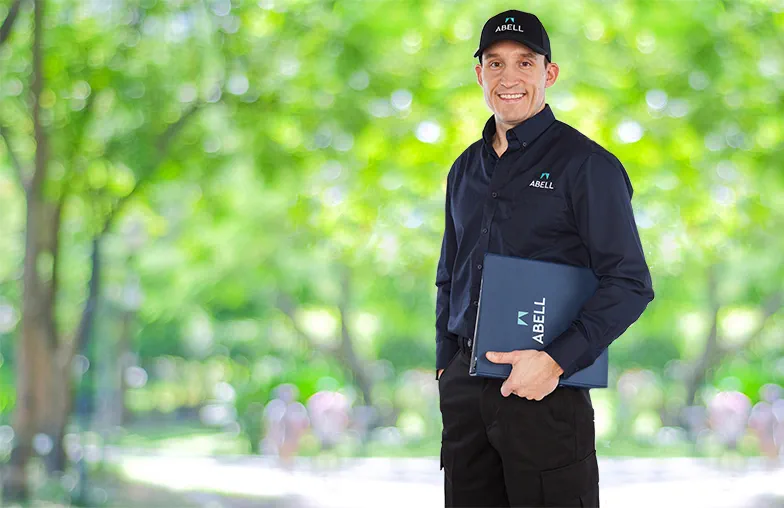Phorid flies (also called scuttle, hump-backed, and coffin flies) are small flies that breed in moist, decaying organic matter. Since the phorid fly frequents unsanitary areas, they can transmit pathogens onto foods or working surfaces in food preparation facilities.
Phorid flies are a concern to hospitals, healthcare facilities, restaurants, food production facilities, and funeral homes/mausoleums.
Phorid flies are small, hump-backed flies resembling fruit flies. Phorid flies can often be identified by their escape habit of running rapidly across a surface rather than taking to the air.
Adult phorid flies measure 1/8” in length with arched thoraxes that give the appearance of a humped back. They range in colours, from black, brown, yellow, or a combination thereof. They have short antennae (located on the front of the head) and rather spiky hairs on the face and head. The back legs of phorid flies are often very long in relation to their body size.
Another key id feature are the two veins in an m or w shape running towards the top or leading edge of the wings.
Adult phorid flies are found near materials that larvae can feed on-moist, decaying, organic matter. Breeding sources may be unsanitary in many cases (such as a leaking sewage pipe), which is how phorid flies transport pathogenic microorganisms to food prep surfaces and materials, mainly in food processing facilities.
They are most active during the warmer weather, but can also be active during the winter months indoors.
A female phorid fly can lay about 20 eggs at a time - approximately 500 eggs in her lifetime. They lay their eggs on or near the surface of decaying organic matter.
In 24 hours, larvae will emerge and feed for eight to 16 days. The larvae will then crawl to a drier spot to pupate.
The life cycle from egg to adult can be completed in as little as 14 days under ideal conditions but can take up to 37 days. Depending on the conditions, phorid flies can live up to two months.
The common name of ‘coffin fly’ comes from their tendency to breed in mausoleums or other areas where human corpses can be found. They can even breed in coffins underground.
Are phorid flies hazardous to humans?
Since the phorid fly frequents unsanitary areas, they are a hazard as they can spread diseases and pathogens through food contamination.
What causes a phorid fly infestation?
Any accumulation of moist decaying organic matter will cause an infestation. This could be in a grease trap, garbage can that has not been emptied or cleaned regularly, drains, floor cracks, etc. The most difficult situation involving phorid flies is when a pipe or drain line breaks or leaks below the slab floor. Over months or years, the wet organic material accumulates and creates an environment where these small flies thrive in very high numbers. They will make their way up to public areas through drain lines and foundation cracks from the slab. Investigation under the slab is required, and extensive repairs may be the only answer to fully controlling these flies. Camera’s or cutting through the slab may be the only way to determine where the leak and breeding areas are. These tiny flies can also thrive in sink drains and sewers where decaying matter can be found.
Where do phorid flies breed?
How can I prevent a phorid fly infestation?
To prevent an infestation and allow the phorid fly to breed inside your property, regularly clean out your trash and recycling bins, fix leaky pipes and seal all cracks, holes, and crevices. If the breeding areas are not removed, the flies will return.
How do I remove a phorid fly infestation?
The key to phorid fly control is finding and eliminating areas where adult females lay their eggs. Adult phorid flies can utilize a wide array of habitats for egg-laying. They are most abundant around decaying plant and animal matter. Outdoors, be on the lookout for and dispose of sewage-contaminated soil, garbage, moist landscape clippings, dirty trash receptacles, compost, and other organic materials that hold moisture.
Fix leaky pipes and seal all cracks. An infestation of phorid flies often catches homeowners by surprise as they multiply very quickly. If things become worse, contact Abell Pest Control. We're experts at the removal of phorid fly infestations.
If I have an infestation of phorid flies, what can I do to further eliminate them?
Call your local Abell Branch for options to control these structure-infesting flies. Bioremediation can provide control when breeding areas are difficult to reach. Fly lights also can be a useful tool and can be installed and maintained by your Abell representative.

If you are not satisfied with the services provided to you within the guarantee period, you will receive a Full Money Back Refund *Terms and Conditions apply